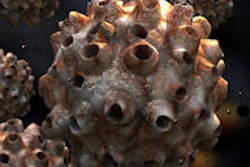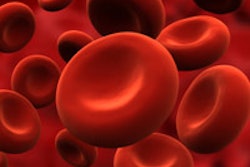Researchers have completed a phase II clinical trial that may help identify patients with human papillomavirus (HPV)-positive oropharyngeal cancer who do not require the full radiation dose given in a standard regimen of intensity-modulated radiation therapy.
Preliminary findings will be presented by lead study author Shanthi Marur, MD, an oncologist at the Johns Hopkins Sidney Kimmel Comprehensive Cancer Center, at the American Society of Clinical Oncology (ASCO) annual meeting on June 2 in Chicago.
Between 60% and 80% of cancer of the oropharynx cases are associated with infection by HPVs, the study authors noted. Patients with HPV-associated oropharyngeal cancer tend to be younger than other oropharyngeal cancer patients, and would be living with the aftereffects of treatment for more years. A patient who undergoes standard radiation to the back of the throat -- usually between 66 Gy and 70 Gy -- may suffer serious side effects such as dry mouth and dysfunction in swallowing.
The investigators suspected a subset of HPV-associated oropharyngeal cancer patients, identified by their response to chemotherapy, may be suitable for trials of lower radiation.
Barbara Burtness, MD, senior study author and chief of head and neck medical oncology at Fox Chase Cancer Center, and her co-investigators enrolled 90 patients in the trial, 80 of whom were analyzable. Of those patients, 95% were men, and the median age was 57. Patients enrolled in the trial received an initial regimen of chemotherapy followed by treatment with the targeted therapy cetuximab, a monoclonal antibody. In the study, a patient's response to those initial treatments determined the dose during radiation treatment.
Most patients tolerated the induction chemotherapy and treatment with cetuximab, and 96% completed all three cycles, the researchers found. Forty-six patients had a complete clinical response, which meant all signs of the primary tumor had disappeared following treatment. These patients went on to receive a lower-than-standard dose of radiation, at 54 Gy. If the two-year progression-free survival rate is at least 85%, further studies on lower-dose radiation are warranted, according to the investigators.
Dr. Burtness noted that among patients who received a lower dose of radiation, what seemed to predict for a slightly worse outcome was either a heavy smoking history (more than 10 pack-years) or those with larger tumors.
The patients who were responsive to chemotherapy may also be more responsive to radiation, explained. Therefore, the use of a full dose of radiation for those patients might represent overtreatment.
Although it's too early to draw definitive conclusions, the early results may justify further study of deintensifying radiation among nonsmokers with HPV-associated oropharyngeal cancers, Dr. Burtness added.



















